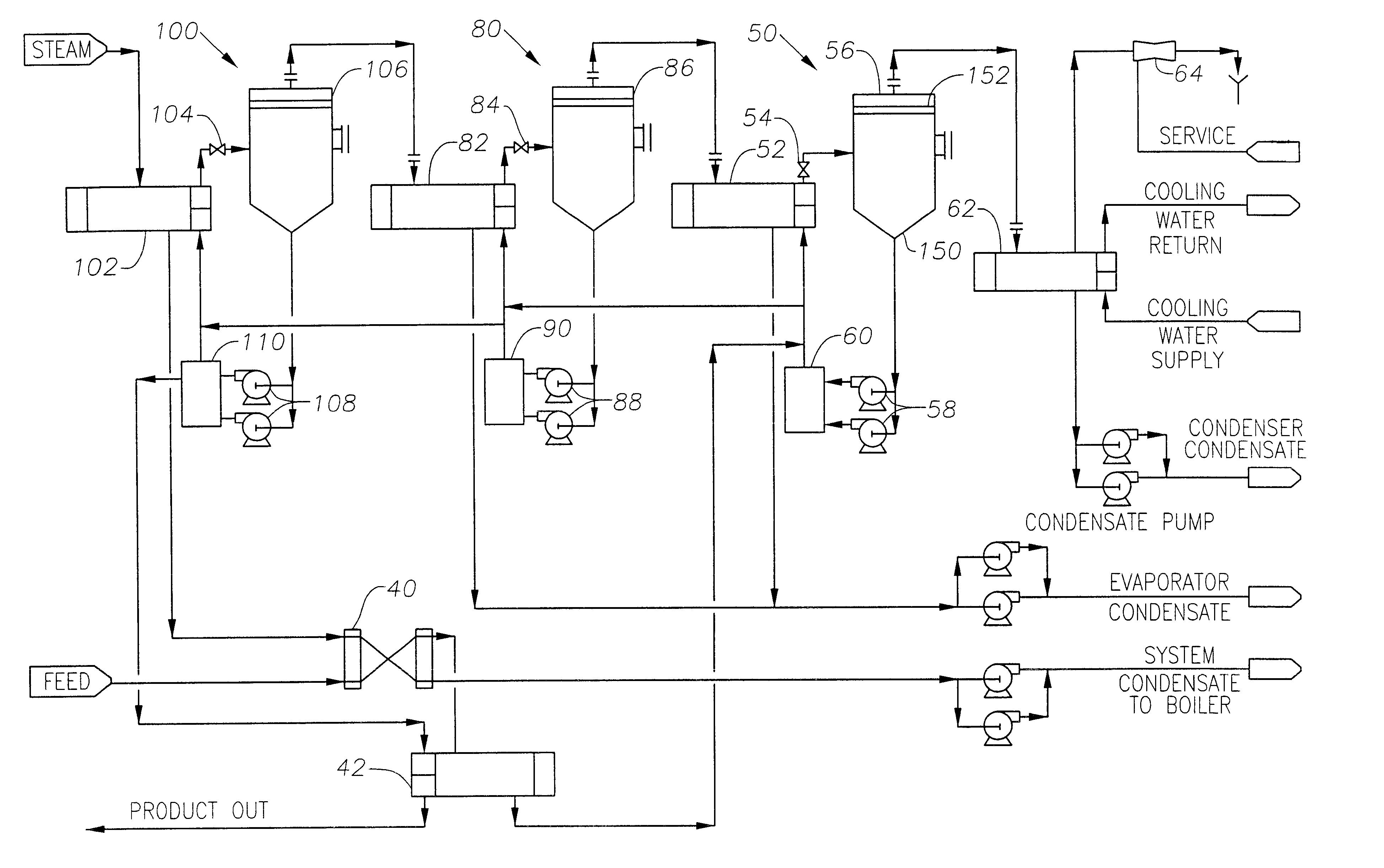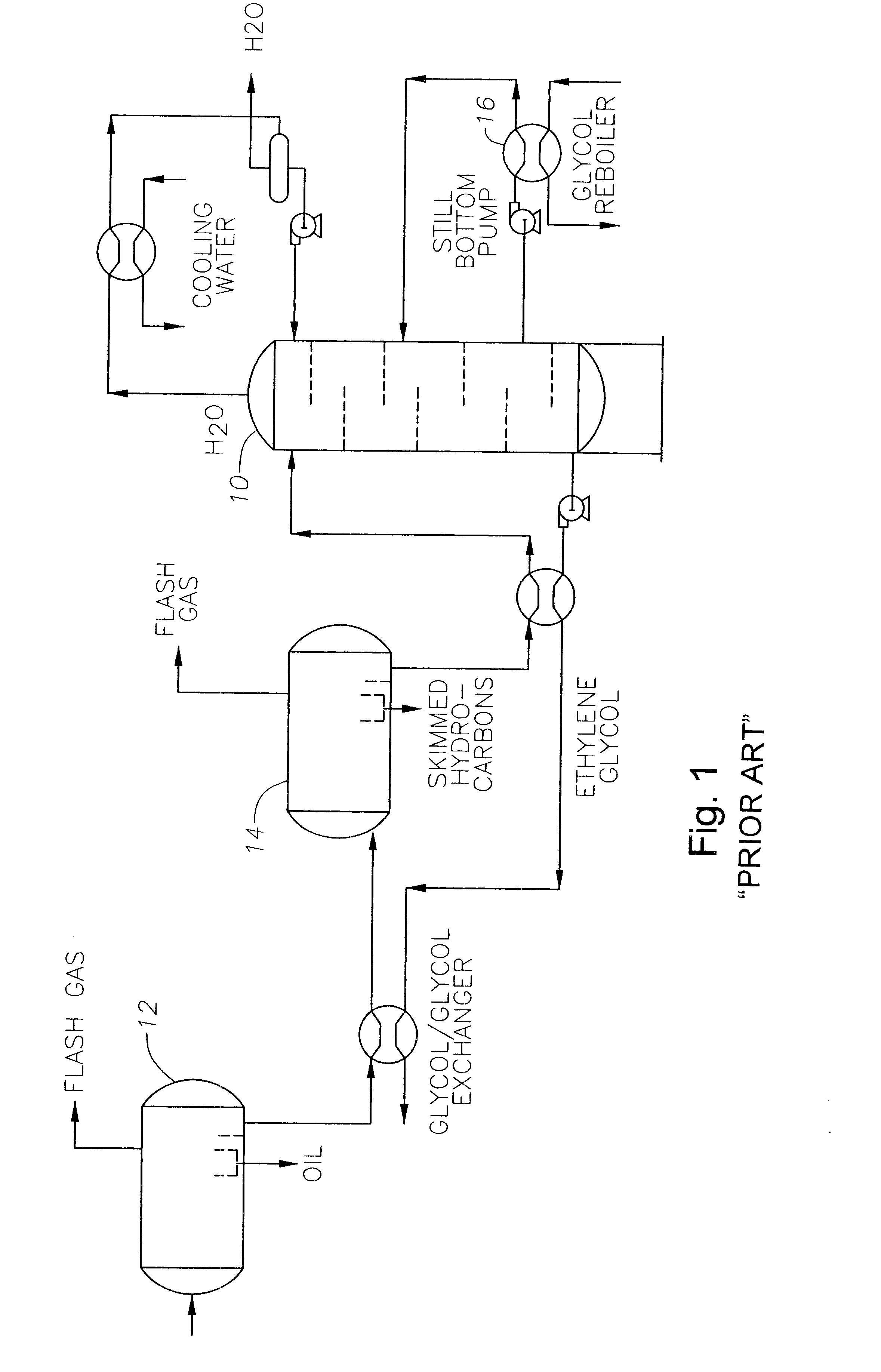System for recovering glycol from glycol/brine streams
a glycol and brine stream technology, applied in refrigeration components, multi-effect evaporation, refrigeration machines, etc., can solve the problems of large loss of methanol in the brine stream, formation of hydrates, and environmental problems associated with the disposal of the brine stream
- Summary
- Abstract
- Description
- Claims
- Application Information
AI Technical Summary
Problems solved by technology
Method used
Image
Examples
Embodiment Construction
The present invention is a glycol recovery system and process for use on mixtures of glycol and brine produced from a hydrocarbon reservoir during the production of natural gas. While the actual concentration of glycol in the brine may vary depending upon production conditions, process of the present invention is preferably used to recover glycol from streams containing about fifty percent (50%) glycol and about fifty percent (50%) brine. Typically, the stream will contain about thirteen percent (13%) sodium chloride. However, those skilled in the art will recognize that the process and the system of the present invention is equally applicable to glycol / brine streams of differing concentrations. Preferably, however the glycol brine streams are in the range of about twenty-five percent (25%) to about seventy-five percent (75%) glycol.
Additionally, the process and system of the present invention is applicable to different types of glycol used as an hydrate inhibitor including ethylene...
PUM
| Property | Measurement | Unit |
|---|---|---|
| pressure | aaaaa | aaaaa |
| temperature | aaaaa | aaaaa |
| pressure | aaaaa | aaaaa |
Abstract
Description
Claims
Application Information
 Login to View More
Login to View More - R&D
- Intellectual Property
- Life Sciences
- Materials
- Tech Scout
- Unparalleled Data Quality
- Higher Quality Content
- 60% Fewer Hallucinations
Browse by: Latest US Patents, China's latest patents, Technical Efficacy Thesaurus, Application Domain, Technology Topic, Popular Technical Reports.
© 2025 PatSnap. All rights reserved.Legal|Privacy policy|Modern Slavery Act Transparency Statement|Sitemap|About US| Contact US: help@patsnap.com



